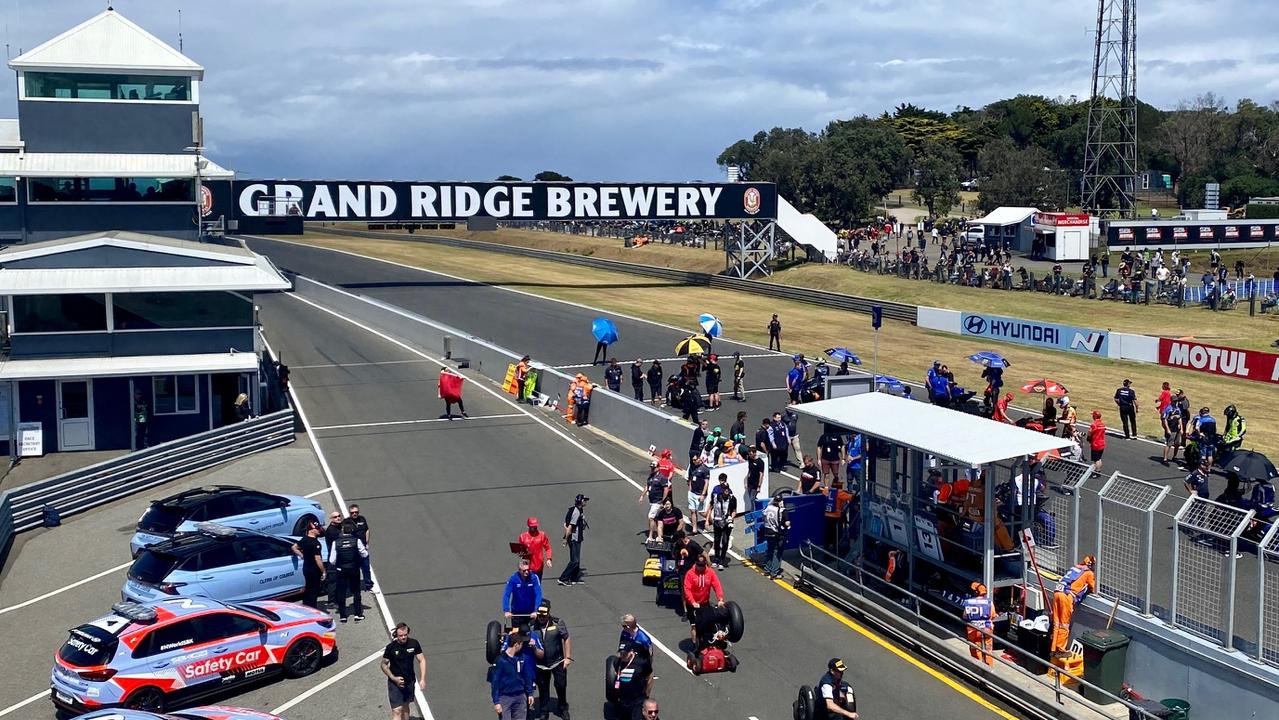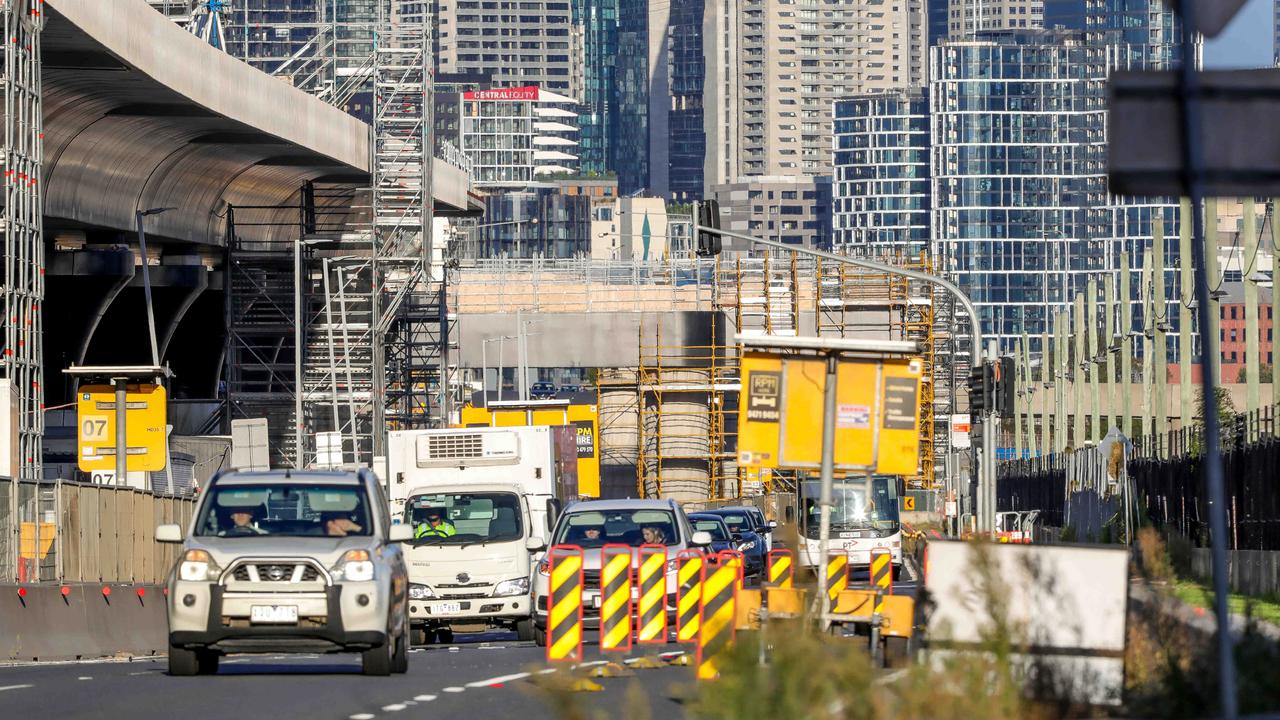Cabinet papers show fears over head of state derailed Yes vote for Australian republic
AN Australian republic without a directly elected head of state appeared doomed years before it was voted down at a referendum, previously classified documents have revealed.
News
Don't miss out on the headlines from News . Followed categories will be added to My News.
AN Australian republic without a directly elected head of state appeared doomed years before it was voted down at a referendum, previously classified documents have revealed.
FORMER PRIME MINISTER PAUL KEATING TOLD RUSSIAN SPY GROUP INFILTRATED ASIO
Cabinet papers for 1994-95, released today by the National Archives of Australia, show the Keating Labor government was warned the most contentious issue in severing ties with the British monarchy would be the way in which an Australian president would be appointed.
Among the almost 100 pages of Cabinet documents is AGB McNair polling in February 1994 that showed support for the direct election of a president was at 91 per cent.
But buoyed by his unexpected “sweetest victory of all” at the 1993 election, prime minister Paul Keating forged ahead with detailed planning for a referendum he hoped would lead to a republic by the centenary of Federation in 2001.
A compelling submission to Cabinet, chiefly authored by then Republic Advisory Committee chairman Malcolm Turnbull, put its case for a “minimalist” move to an Australian head of state.

Mr Keating, as set out in his speech to parliament on June 7, 1995, favoured a small but significant step. He argued that popular election could not be trusted to deliver appointees of appropriate “calibre”.
“Governments can wait for opinion to force their hand, or they can lead. They can wait for the world to change and respond as necessity demands, or they can see the way the world is going and point the way,” he told parliament.
“We are approaching the 21st century and the centenary of our nationhood. As never before we are making our own way in our region and the world. For us, the world is going — and we are going — in a way, which makes our having the British monarch as our head of state increasingly anomalous.”
The submission outlines a suite of challenges facing the republican push — most notably to preserve historical legitimacy of the head of state and his or her viceroy, the governor-general.

The second challenge was to do that while preserving the primacy of the elected government over the head of state.
Mr Keating, supported by the Mr Turnbull-authored document, warned that a popular election could lead to the head of state being seen as more important than the actual government.
Central to the internal debate within the Keating Cabinet were the powers of the head of state.
Two decades on from the national turmoil created by Sir John Kerr’s sacking of Labor prime minister Gough Whitlam, the documents show sensitivities still remained and stressed that no references should be made to what a president could or would have done if one had been in place in November 1975.
But public backing for the favoured model — appointment or removal of the president by a two-thirds majority of a joint sitting of both houses of parliament — had support as low as 3 per cent.
That model was endorsed by the Republic Convention in February 1998 and went to a national referendum in November 1999.

John Howard, who returned as Liberal leader in January 1995, would exploit the differences within the republican movement to great success. The republic push was defeated 54.87 per cent to 45.13 per cent.
Victoria, with 49.84 per cent in favour, had the strongest support of any state.
As current Labor leader Bill Shorten pledges another national vote on the issue during the first term of a Labor government, Mr Keating’s then deputy, Kim Beazley, has said there was no chance the public would accept it without having a say on who would be president.
“At the end of the day, that’s a killer. I just felt we did not have a show of getting the republic through without the directly elected model,” he said.
Mr Beazley said Mr Keating was focused on the problem of a possible dual mandate, pitting the future president against the prime minister.

“It was Paul’s ultimate big-picture position, designed to produce an outcome which, if he won the subsequent election, would be almost the signature effort of the new government,” he said.
Mr Turnbull, who became prime minister 20 years later, said Australia should not enter into another debate until the end of the Queen reign.
“You’ve got to make sure you’ve got the timing right,” Mr Turnbull said last month.
“I think the timing for another vote on the republic is after the end of the Queen’s reign, which will be an extraordinary time of sadness and also extraordinary watershed in world history.”
Mr Beazley said the direct election and the codification of head-of-state powers was the only way a republic could be achieved.
“I don’t think it has a snowball’s chance in hell without that,” he said.
RACIAL HATRED LAWS SPARKED FEARS OF THE DEATH OF FREE SPEECH
CONVINCED that racism and racist violence in the Australian community justified a strong response, the then Labor government pressed ahead with new laws to deal with racial hatred.
And in doing so, it launched a simmering controversy over one particular provision which outlaws any act which has the effect of offending, insulting, humiliating or intimidating another person or group.
Better known now as Section 18C of the Racial Discrimination Act 1975, an amendment made in 1995 followed a long period of public consultation.
Cabinet papers for 1995, released today by the National Archives of Australia, show that even then, there was widespread objection on grounds that this would impact free speech.
Labor government attorney-general Michael Lavarch said in his view, none of the fears were well founded and it would not affect the basic right of freedom of speech.

“That right is, of course, not absolute — there are already a number of restrictions on freedom of speech under existing law, for example laws on defamation and obscenity,” he said in his submission to Cabinet in October 1994.
“I believe the right to free speech must be weighed against the right of people from different racial backgrounds to enjoy their lives free from racial discrimination and hatred.”
However the government proceeded there would be strong criticism, Mr Lavarch admitted.
He said there were good reasons for anticipating this would be more rather than less divisive, protecting people who stood out on the basis of their religious dress.
In a draft speech to parliament, Mr Lavarch said this law was intended to cover racist statements or propaganda of a serious and damaging kind.
He cited examples such as extremist groups letterboxing leaflets accusing certain races of plotting to overthrow the government, public speeches calling for repatriation of ethnic groups or violence against ethnic groups.
- Max Blenkin
ISLAMIC EXTREMISM ‘A WILDCARD’
THERE were fears Australia’s overseas spy agency was “out of control” and needed to be reined in after the end of the Cold War, Cabinet papers from 1994-95 reveal.
It was also a time when Islamic terrorism was increasingly coming on to the top spy agency’s radar as a “wildcard threat”.
In a 1995 Cabinet submission from justice minister Duncan Kerr, the offences of treachery and treason were replaced with a narrower offence of treason; the offences of mutiny, assisting prisoners of war to escape and harbouring spies were repealed; and espionage and sabotage laws were narrowed.
“The existing provisions reflect their imperial and Cold War origins and do not adequately recognise the present-day realities,” he stated.

Mr Kerr also wanted the specific offence of killing the Queen to be eliminated, contained within treason laws, so she would have the same protections of law that everyone else had, but decided against this due to sensitivities around the republic debate.
In 1994, the Keating government announced its Commission of Inquiry into the Australian Secret Intelligence Service, which deals with overseas spying.
Cabinet papers reveal foreign affairs minister Gareth Evans noted the agency had “an internal culture that places a high premium on secrecy and loyalty”. He decided against taking legal action against some ASIS agents for “damaging public comments” made to the media, but warned them against speaking out further.

The inquiry was headed by former NSW Supreme Court judge Gordon Samuels, who found there was no evidence ASIS was out of control.
Australia’s security agencies were also becoming wary of the growing “wildcard” of Islamic extremism.
Australia dealt with the fallout of the April 1992 attack on the Iranian Embassy in Canberra, which was part of a co-ordinated assault in several countries by Iranian dissidents.
It was noted that despite warnings, “Australian officials did not come to grips with prior indications that an attack in Australia was possible”.
The Codd Review into the attack was released in 1995 and recommended a review of resources for counter-terrorism and overhauling information-sharing between agencies.
- Matthew Killoran


